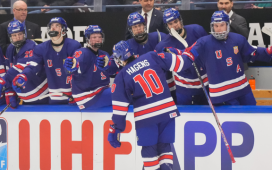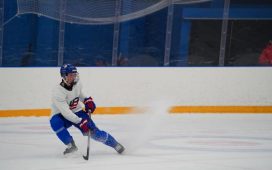The Coyotes haven’t qualified for the playoffs since 2011-12, but the team in a better situation compared to the last expansion draft. If the team is going to be a long-term contender, retaining key forwards should be prioritized over keeping aging defensemen.

Welcome to the Expansion Plan, our summer series projecting the protected lists for the 30 NHL franchises who will participate in the June 2021 Expansion Draft.
Over the next two seasons, every team – save the Vegas Golden Knights, who will be exempt – will be planning for the arrival of the NHL’s 32nd franchise and Seattle GM Ron Francis will begin to consider the options for his inaugural roster. As such, over the course of the next 30 days, we will profile one team, in alphabetical order, and forecast their potential list of protections and exposures, as well as address each team’s expansion strategy, no-brainers, tough decisions and what lessons they learned from the 2017 expansion process.
This exercise requires some important ground rules. The 2021 Expansion Draft will follow the same rules as the 2017 Expansion Draft, but some assumptions are necessary. These are the guidelines followed:
- No pre-draft trades
- All no-movement clauses are honored
- Players who will become restricted free agents in 2020 or 2021 remain with current teams
- Players who will become unrestricted free agents in 2020 or 2021 either remain with current teams or are left off lists entirely (eg. Nicklas Backstrom protected by the Washington Capitals, Tyson Barrie not protected by Toronto Maple Leafs or any other team.)
• • •
With the team’s top goaltender injured most of the season and without a 20-goal or 50-point scorer, it’s baffling to think Arizona was in playoff contention entering the final weeks of the season. The Coyotes haven’t played a post-season game since the last expansion draft, and it’s not surprising given who they had to protect in 2017: Nick Cousins (wasn’t given a qualifying offer this summer), Anthony Duclair (bounced around often the past few years), Tobias Rieder (didn’t score in 67 games this past season in Edmonton), Luke Schenn (signed to a league-minimum deal with Tampa Bay this summer) and Chad Johnson (unlikely to play in the NHL again after an atrocious 2018-19 season that led to the St. Louis Blues calling up Jordan Binnington). The Coyotes lost Teemu Pulkkinen in the expansion draft in 2017, but he never played a game with the Golden Knights before signing in the KHL last season.
There’s still a lot of work needed to make the Coyotes a contender, and years of financial troubles and draft busts haven’t made things easy (imagine if they took Mitch Marner at No. 4 instead of Dylan Strome in 2015?). Having winger Phil Kessel and defenseman Oliver Ekman-Larsson on no-movement clauses takes care of two of their 10 skater decisions, with young blood occupying most of the remaining positions on the protected list.
PROTECTED (7F, 3D, 1G):
Forwards:
- Phil Kessel
- Clayton Keller
- Christian Dvorak
- Christian Fischer
- Vinnie Hinostroza
- Nick Schmaltz
- Derek Stepan
Defensemen:
- Oliver Ekman-Larsson
- Jacob Chychrun
- Kyle Capobianco
Goaltenders:
NOTABLE EXPOSURES: Darcy Kuemper, Lawson Crouse
STRATEGY: If Arizona is serious about contending in the long-term, the club needs to believe in their young depth. They’re not close to winning the Cup and the Coyotes’ top prospects, forward Barrett Hayton and defenseman Victor Soderstrom, are still a few years away. That’s why there’s an emphasis on the established youth in the desert, with six of the 10 skaters currently 25 years or younger. The only real questionable contract is Schmaltz’s $5.85-million cap hit until 2026, but he’s 23 and has had a 50-point season.
With guys like Dvorak, Fischer and Hinostroza, the Coyotes have a group of young guns that are still finding their stride. Stepan is expendable due to the team’s depth down the middle, but he has proven he can be a 50-point scorer. Defensively, you have two youngsters in Chychrun and Capobianco who, if they reach their full potential, will be the future of the franchise, but injury concerns have limited their action early on. Capobianco is the biggest risk with just three NHL games played to date, but he’s too good for the AHL and once he’s fully recovered from his lower-body injury, he’ll factor into the team’s top four. Exposing veteran defenders Alex Goligoski and Niklas Hjalmarsson is not ideal, but both will be UFAs and nearing 35 in two seasons.
THE NO BRAINER: It’s not too early to project Clayton Keller will become one of Arizona’s best players ever, despite a big dip offensively in his sophomore campaign. If the Coyotes can surround Keller, their 2018-19 All-Star Game representative, with the right help, his ability to find teammates through traffic and his relentless attitude when chasing the puck will make Arizona a contender down the road.
THE TOUGH DECISION: Crouse never emerged as the top-six forward he was projected to be, but has started to show some true promise as an effective bottom-six winger who can dominate shifts by using his large frame to full advantage. He’s 22 and has a bright future, but it’s time for Arizona to consider moving on to add extra speed and skill.
LESSON LEARNED: The Coyotes were a bottom-feeding team in 2016-17 and haven’t shown significant improvement since, but can’t afford to lose any of the young talent that gives them hope for the future. Retaining key forwards for the long-term should be prioritized over keeping aging defensemen.
Up Next: Boston Bruins
Previous: Anaheim Ducks
(All salary cap information via CapFriendly)
Want more in-depth features, analysis and an All-Access pass to the latest content? Subscribe to The Hockey News magazine.








